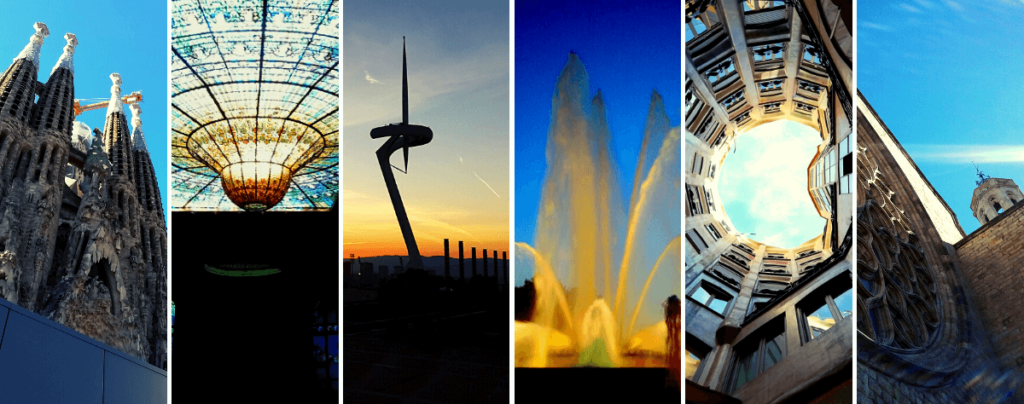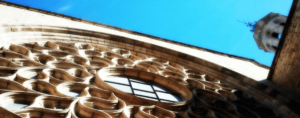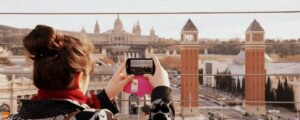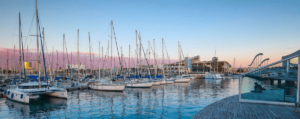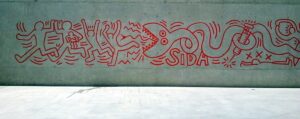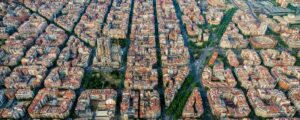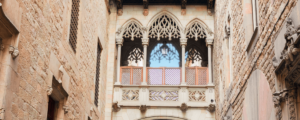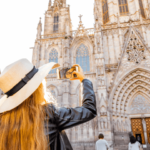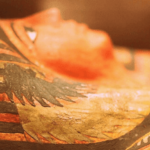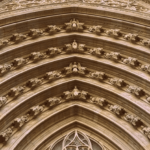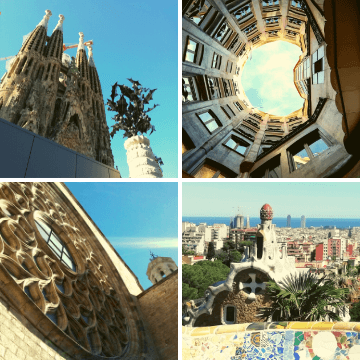
Top Tourist Attractions in Barcelona
TOP BARCELONA SIGHTS TO SEE IN YOUR NEXT TRIP
Barcelona is a great city, with lots of cool attractions and things tourists can see and do. A history of over 2000 years has left a wide rage of historical sites in Barcelona: from the Roman times, through the Middle Ages, then the Industrial Revolution up to modern days. A fascinating architect, Antoni Gaudi, filled the streets with unique architectural landmarks.
It’s a city that is family-friendly and interesting for museum-lovers as well as sports fans. The hills next to the Mediterranean see provide a diversity of urban landscapes that is hard to rival. Not sure where to start? Here are the top must-see sights in Barcelona!
These are the 20 most famous landmarks in Barcelona
1
Sagrada Familia Church
This church is the most iconic Barcelona landmark, and one of the most visited tourist sites in Spain. Started by a local architect in 1882, Antoni Gaudi came to substitute him in 1883 and turned a traditional project into what was called to become one of the wonders of the world.
The outside is impressive, with its towers touching the skies. But the inside, with the fantastic colors of the stained glasses reflecting on the columns it’s just out of this world. If there’s one single place where you need to spend money to go in, this is it.
It qualifies as:
- Religious building
- Historical site
- Architectural monument
- Must-see landmark
- UNESCO World Heritage sight
More information about it >>
Tour la Sagrada Familia with us >>
2
Park Guell
Another unfinished project by Antoni Gaudi, it was going to be an exclusive residential area in the hills. The promotor of the project was Gaudi’s best friend and patron, Count Eusebi Guell. Unfortunately, the project was a failure and with the years it became a very unique city park and one of the most famous monuments in Barcelona.
It qualifies as:
- Historical site
- Architectural monument
- Public garden
- Must-see landmark
- UNESCO World Heritage sight
3
La Pedrera (aka Casa Mila)
Another Gaudi site, it is clear that what attracts people to Barcelona is the architecture of this singular genius. La Pedrera was the apartment building commissioned by the Mila family to Gaudi and built between 1906-1912. Locals thought it was so ugly it looked like a stone quarry, so they nicknamed it “La Pedrera”, the Quarry.
Now of course it’s one of the main attractions in Barcelona. You can either see it from outside, or go inside. The visit includes the rooftop, the attic with an exhibit on Gaudi’s architecture and an apartment with furniture from the early 1900’s. It’s also open for tourists at night.
It qualifies as:
- Historical site
- Architectural monument
- Must-see landmark
- UNESCO World Heritage sight
4
Casa Batllo and Block of Discord
So locals started calling it the “Block of Discord”. Antoni Gaudi built there his Casa Batllo (tourists can visit the rooftop, the washing rooms in the attic and the floor where the owners lived, now devoid of furniture).
Next door, Puig i Cadafalch built Casa Amatller for a family of chocolate makers (their fully-furnished apartment is visitable, and you can also have a hot chocolate in the cafe of the street level). And Domenech i Muntaner built Casa Lleo Morera in the corner, the only one not open to the public.
It qualifies as: Historical site | Architectural monument | Must-see landmark | UNESCO World Heritage sight
More information about it >>
5
Barcelona Cathedral
The Cathedral can be visited by tourists outside of mass hours, and the visit includes the inside naves, the crypt and the cloister where 13 geese live. For an extra fee you can also take the elevator to the rooftop or visit their museum.
It qualifies as: Historical site | Architectural monument | Religious building | Must-see landmark
6
Plaça del Rei
It’s a very scenic architectural ensemble worth checking. Plus the Royal Palace building hosts the Museum of History of Barcelona (MUHBA), with some unique Roman excavations located in its basement.
It qualifies as: Historical site | Architectural monument | Must-see landmark
Visit the MUHBA museum >>
7
La Rambla
When it didn’t rain it was mostly dry and people organized farmer markets there and went for strolls. That’s how eventually it became a lively boulevard. Considered by many a tourist trap, you’ll be fine seeing it once but avoiding eating there. Still, you have to see it.
It qualifies as: Public space | Must-see landmark
Learn more about La Rambla >>
8
Boqueria Market
The mornings are the best time to visit, as some stalls close in the afternoons, and it’s closed on Sundays. If you can stay for lunch in one of the tapas bars of the market, it’ll be a highlight of your trip.
It qualifies as: Shopping area | Must-see landmark
Learn more about La Boqueria >>
9
Palau de la Música Catalana
Considered by many the masterpiece of the modernist leader Domenech i Muntaner, this concert hall was built for and paid by the Barcelona working class of the early 1900’s. It’s a spectacular venue with a mind-blowing stained-glass skylight, and gorgeous sculptures and mosaics all over the place.
Tourists can visit it during the mornings, or attend a concert at night. There’s often flamenco shows and Spanish guitar concerts. Either way, don’t miss visiting: it’s definitely an iconic must-see.
It qualifies as:
- Historical site
- Architectural monument
- Must-see landmark
- UNESCO World Heritage sight
10
Picasso Museum
His little known teenage works in the Barcelona art school and under his father influence as well as his first pieces in Paris will open a new view of who Picasso was for you. You’ll also see a nice collection of the artist’s Blue Period and some pieces of the Pink Period and Cubism.
The museum ends with his late years pottery works and the intriguing series dedicated to Las Meninas of Velazquez. The visit of the museum is much better with a guide’s explanations, as there isn’t much information available inside the museum rooms.
It qualifies as: Art Museum | Historical site | Must-see landmark
Learn more about the Picasso Museum >>
Take a tour of the Picasso Museum with us >>
11
Santa Maria del Mar
It can be visited outside mass hours. The access to the street level is free, but to access the crypt, the tribunes and the rooftop there’s a small entrance fee. If you like historical novels, don’t miss the book The Cathedral of the Sea by Ildefonso Falcones, about its construction.
It qualifies as: Religious building | Historical site | Architectural monument | Must-see landmark
Learn more about Santa Maria del Mar >>
12
Palau Nacional - MNAC Museum
The Palau Nacional was built as the main pavilion of the 1929 World Fair. Here the Spanish Royals inaugurated the World Fair. From outside, seen from Plaça Espanya, it’s an impressive tourist site that offers many photo opportunities. And there’s great city views from the front of the building, too.
Nowadays it houses the Museum of National Art of Catalonia (MNAC), which covers 1000 years of the local art, from the unique Romanesque frescoes that once covered the walls of small chapels in the Pyrenees, to important Gothic Retables.
From Renascence and Baroque pieces of international artists, to Modernism paintings, sculptures and furniture, to examples of the first vanguards. A must for art lovers, but too intense for people who can’t stay longer than 1 hour in a museum.
It qualifies as:
- Historical site
- Architectural monument
- Art Museum
- Must-see landmark
13
Font Màgica (Montjuic Fountains)
At the foot of the MNAC museum there’s a fountain that doesn’t stand out much during daytime, but at night it transforms. It was one of the most popular shows of the 1929 World Fair: a fountain that dances to the music and changes colors. Make sure to check out if it’s on during your stay and what’s its schedule, as it changes depending on the season.
It qualifies as: Evening show | Historical site | Must-see landmark
Learn more about the Montjuic Magic Fountain >>
See the Magic Fountain with us during our Montjuic tour >>
14
Camp Nou Stadium
The Camp Nou (“New Stadium”) is the headquarters of the famous FC Barcelona Club. This historical soccer club was founded in 1899, and the current stadium dates from 1957. With a capacity of almost 100,000 people, it’s the largest in Europe and the third in the world.
It’s open to tourists on days when there’s no match. The visit includes the grass level of the stadium, the visitors changing room, the commentators booths at the top of the stadium, the press rooms, the VIP balcony and lounges as well as the museum where the trophies are kept.
It qualifies as:
- Historical site
- Sport facility
- Must-see landmark
15
Olympic Ring
The Olympic Stadium is can be seen from a balcony, free of charge. The Palau Sant Jordi by Arata Isozaki is only open when there are events being celebrated inside. The Picornell Olympic pools are now a sport club and you can buy a day pass to use its facilities. And the building where the martial arts competitions took place is now the Faculty of Physical Education of the University of Barcelona.
The other elements that stand out are the white and slim telecommunications tower by Santiago Calatrava, and the sculpture Change by Aiko Miyawaki composed by 36 columns connected by wires that cut the wind.
It qualifies as: Sport Facility | Historical site | Architectural ensemble | Must-see landmark
16
Aquarium
When the Aquarium of Barcelona was open, around the time of the Barcelona Olympics, it was the best in Europe. It specializes in sea life from the Mediterranean areas – maybe not as colorful as tropical seas, but still fascinating. The best part is the tunnel under the sharks tank.
It qualifies as:
- Science Museum
- Family-friendly activity
17
AGBAR Tower
It was built between 1999-2005 by the French architect Jean Nouvel, and it’s an intelligent building that stands out for its sustainability. It’s become an icon landmark of the city skyline, specially at night when it’s lit up with thousands of LEDs. The interior cannot be visited at the moment.
It qualifies as: Architectural building | Must-see landmark
18
1888 World Fair area (Arch of Triumph & Ciutadella Park)
The Ciutadella Park occupies the space where there had been a military fortress that controlled Barcelona since the city defeat in 1714 (War of Succession). When the fortress was finally dismantled, here took place the first World Fair of Barcelona (1888).
The entrance was through a grand Arch of Triumph, located at the beginning of a palm tree boulevard leading to the park. In one corner, the modernist buildg of the Castle of the Three Dragons served as restaurant for the Fair visitors. There was greenhouses, a monumental fountain and a lake where you could row small boats.
Nowadays one of the few buildings left from the military citadel is used as the Catalan Parliament, and a large portion of the park is occupied by the Barcelona Zoo, featuring lions and other felines, gorillas and chimps, rhinos, elephants, giraffes, red pandas, kangaroos, Komodo dragons, alligators, python snakes and many more exotic species.
It qualifies as:
- Public garden
- Family-friendly activity
- Must-see landmark
- Architectural ensemble
- Historical site
19
Hospital de Sant Pau
The modernist architect Domenech i Muntaner had already build a sanatory in the town of Reus when the philanthropist Pau Gil asked him to build a new hospital that would replace the dated medieval facilities that were used so far.
The result was a handsome medical enclosure divided in pavilions where patients were distributed by sex and type of illness – an innovation for the early 1900’s! There were gardens in the middle, to grow medicinal plants and encourage contact with nature for faster healing. And underground tunnels connecting the pavilions to facilitate the mobility of the medical staff and service providers.
In 2009 the medical units started being moved to a new modern hospital, and after 4 years of restoration works, the historical hospital was opened as a tourist attraction in 2014. The visit includes the entrance pavilion and some of the medical pavilions, the tunnels, the gardens and the surgery room.
It qualifies as:
- Must-see landmark
- Architectural ensemble
- Historical site
- UNESCO World Heritage sight
20
Tibidabo Hill
In 1921 was inaugurated here what now is the oldest amusement park in Spain. Nowadays it combines vintage attractions with modern rides, 3D movies, virtual reality and a terror tunnel. Great for all ages!
Next to it there’s the impressive Basilica of the Holy Heart, built in 1962 in neo-Gothic style. It is possible to take an elevator to the highest spire to enjoy breathtaking views over the city and the forest and valleys beyond.
Finally, the British architect Norman Foster built here another telecommunications antenna that reaches 733.9 m / 2407.8 ft of height in its highest point.
BONUS: Other Gaudi buildings
BONUS: Other Barcelona historical sites
- Roman Temple
- Plaça Sant Jaume, where the Roman Forum used to be and now the political center of Barcelona. Here stand both the City Council and the Generalitat Goverment.
- Drassanes, the medieval Royal Shipyards, now housing the Maritime Museum
- Jewish Section, where the medieval Hebrew community lived until the attacks of 1391. Don’t miss the Synagogue and the Center of Interpretation.
- Fossar de les Moreres, where the heroes that died defending Barcelona during the War of Succession of 1714 were buried.
- Born Centre Cultural, with its medieval excavations and testimonials of the War of Succession.
- Sant Felip Neri, a square bombed during the Spanish Civil war: you can still see the damage left by the bombings in some of the walls.
- Liceu Opera House, not only a theater but it’s suffered anarchist attacks and a furious fire that destroyed the original building.
- Bunkers of Carmel. Not really bunkers but what’s left of the anti-aircraft artillery used by the republicans against Mussolini’s bombers during the Spanish Civil War.
BONUS: Other Barcelona attractions for families
Barcelona is a very kid-friendly city! They’ll have fun sightseeing: the Gaudi sights of Barcelona are so happy and unique children love them. But there are many more attractions of Barcelona for families:
- Cool rides: cable cars, port boats…
- Fun museums: Maritime, Chocolate, Wax, Music…
- Digital and interactive attractions…
See our best ideas for things to do in Barcelona for families >>
BONUS: Other famous landmarks in Barcelona
- Cat, by Fernando Botero
- Woman and Bird, by Joan Miro
- Christopher Columbus (there's an elevator that takes you to the top!)
- Face of Barcelona, by Roy Lichtenstein
- Fish, by Frank Gehri
BUILDINGS AND CONSTRUCTIONS:
- Santa Maria del Pi church
- Monastery of Sant Pau del Camp
- Monastery of Pedralbes
- Plaça Reial
- Montjuic Castle
- Bridge over Bisbe street
- Las Arenas (a former bullring turned shopping mall)
- Casa de les Punxes, by Puig i Cadafalch
- Market of Sant Antoni
- Mies van der Rohe pavilion
- MACBA museum by Richard Meier
- W Hotel, by Ricardo Bofill
- Santa Caterina market, by Enric MIralles and Benedetta Tagliabue
BONUS: Top sights in Barcelona by district
What are your favorite Barcelona sites?
Marta
RESEARCHING FOR A TRIP IS TIME-CONSUMING…
Need more inspiration?
Our 100% FREE Barcelona Collection will give you everything you need to organize the trip of your lifetime to Barcelona.
BEST INSIDER TIPS FROM THE PROS!


